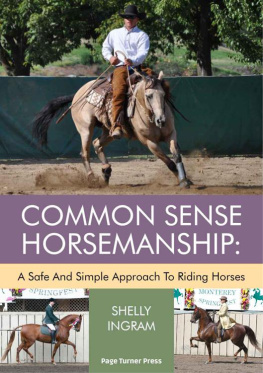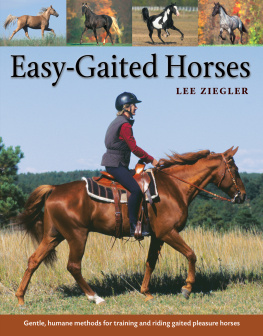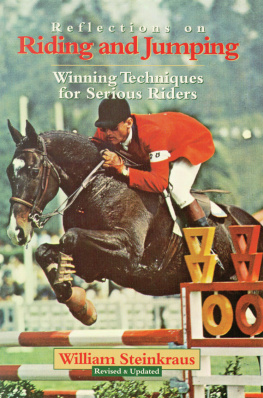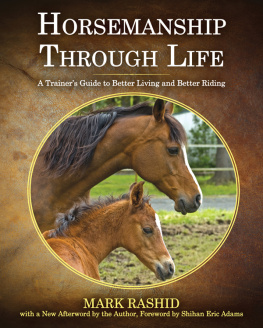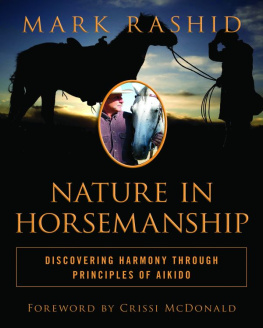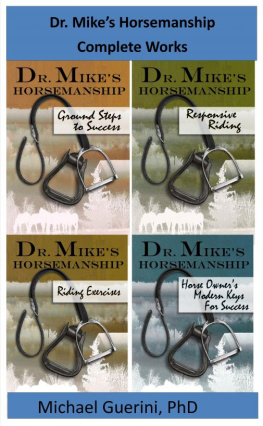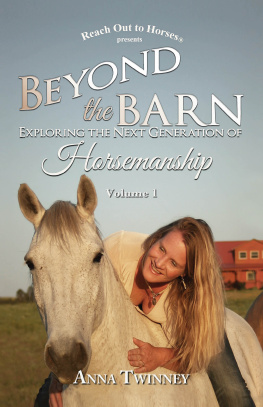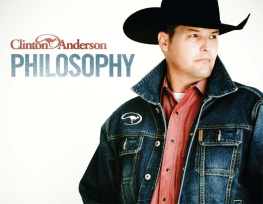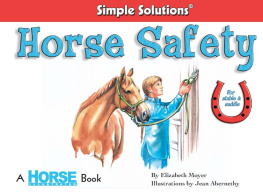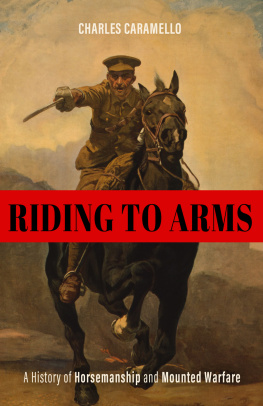Ingram - Common Sense Horsemanship: A Safe And Simple Approach To Riding Horses
Here you can read online Ingram - Common Sense Horsemanship: A Safe And Simple Approach To Riding Horses full text of the book (entire story) in english for free. Download pdf and epub, get meaning, cover and reviews about this ebook. year: 2013, publisher: Page Turner Press, genre: Children. Description of the work, (preface) as well as reviews are available. Best literature library LitArk.com created for fans of good reading and offers a wide selection of genres:
Romance novel
Science fiction
Adventure
Detective
Science
History
Home and family
Prose
Art
Politics
Computer
Non-fiction
Religion
Business
Children
Humor
Choose a favorite category and find really read worthwhile books. Enjoy immersion in the world of imagination, feel the emotions of the characters or learn something new for yourself, make an fascinating discovery.
Common Sense Horsemanship: A Safe And Simple Approach To Riding Horses: summary, description and annotation
We offer to read an annotation, description, summary or preface (depends on what the author of the book "Common Sense Horsemanship: A Safe And Simple Approach To Riding Horses" wrote himself). If you haven't found the necessary information about the book — write in the comments, we will try to find it.
Common Sense Horsemanship: A Safe And Simple Approach To Riding Horses — read online for free the complete book (whole text) full work
Below is the text of the book, divided by pages. System saving the place of the last page read, allows you to conveniently read the book "Common Sense Horsemanship: A Safe And Simple Approach To Riding Horses" online for free, without having to search again every time where you left off. Put a bookmark, and you can go to the page where you finished reading at any time.
Font size:
Interval:
Bookmark:
Table of Contents
IMPORTANT COPYRIGHT AND LEGAL NOTICE:
You do NOT have permission to copy, re-distribute, resell, auction, or otherwise give away copies of this book, whether in e-book or physical book format. E-books are protected by international copyright laws.
If you attempt to do any of the above methods of distributing this e-book or book, you are in violation of international copyright laws and are subject to fines and imprisonment. Copyright infringement is a serious crime with fines starting at $150,000 and up.
Do NOT risk getting yourself in legal trouble by illegally distributing this eBook. On the other hand, you DO have permission to print 1 copy of this book for your own use.
INTODUCTION
This book is intended for the first time rider. If you have always wanted to get involved with horses but just never knew where to start this is the book for you! Included is background information on a wide variety of breeds and riding disciplines geared to helping you choose the one that is right for you. Youll learn strategies for finding a teacher, exercises to get you ready for lessons and what to expect from those lessons. Think of it as a leg up on a fun, safe and successful riding career!
ABOUT ME

Photo by Tass Jones Photography
Shelly Ingram is a third generation horsewoman who currently lives in Northern California where she is a barn manager at a horse retirement facility. She has written for magazines and newspapers on a variety of topics. She began riding at an early age and has apprenticed with several of the top trainers in the United States. During the span of her 30 year career she trained winning show horse and rider combinations on the local, regional and national levels in a variety of disciplines. She also galloped race horses and conditioned competitive endurance horses as well as designed equestrian facilities. She served as a 4H judging team coach and was a recognized horse show judge and clinician for more than a decade.
CHAPTER ONE CHOOSING THE RIGHT HORSE AND RIDING STYLE FOR YOU
People come in all shapes, sizes, and temperaments and the same is true of horses. There are hundreds of breeds, all established for specific reasons by those with a passion for a certain attribute. When you start thinking you want to learn to ride a horse, the most logical first step is to look into all the different options available to you and see which kind of horse suits your goals and personality. All disciplines are concerned with equitation or the ability of the rider to control the horse and demonstrate that control, but there are many different ways to enjoy learning to do that. You cant pair a tap dancer with a ballet artist and expect perfect harmony. Likewise, its important to determine a good horse and rider combination.
If you are a person who enjoys detail and precision, who can see the beauty of a perfectly symmetrical circle, then you may want to look into Dressage. But if you picture yourself as a reincarnation of Gary Cooper and long to ride across the open plains or herd cattle down the trail with Charles Goodnight, the Western style of riding is probably more to your liking.
The two can be combined in the reining division for those who just cant decide where their calling lies.
More into the drama and beauty of a Broadway show? Then the flash and style of the Saddle Type breeds could be just for you. Do you picture yourself on the back of a beautiful hunter chasing hounds across a field or completing a clean jumping round at the Olympics? Consider the hunter or jumper disciplines.
Whatever breed or discipline you decide on you can count of a couple of things.
- Ask ten horse people a simple question and you are very likely to get ten different answers.
- The teacher or trainer you are talking to will tell you that their way, if not the only way, is the BEST way.
This is simply not true. As one old trainer used to say, Riding consists of keeping one leg on each side of the horse. The basics of good riding are the same: balance, timing, and consistency. There is merit to most styles of riding and something can be learned from all of them. Approach horses and riding with an open mind. By really understanding what you are trying to do, you can achieve success even if your methods dont exactly match someone elses. By approaching horses in this way, you will become a horseman and not just a rider or someone who parrots a prescribed method without really understanding why or how it works or doesnt work.
The most important thing to keep in mind when learning to ride is safety. Never do anything that puts you in a position in which you feel uncomfortable or out of control. I dont mean never push yourself or get a bit out of your comfort zone, but dont do anything to satisfy someone elses ego or follow a guru blindly. Working with horses is not the same as taking up tennis; you cant just start hitting balls around the court. First of all, you may come out of the experience just fine but a horse is a living animal and deserves respect and understanding before you start imposing your will on them. At the very least you should have some idea how to communicate with horses.
Learning to be a horseman takes a long time and you must learn to use your eyes and ears, as well as develop your common sense if you want to really get to know how to work with and around horses.
The best advice I ever got was, Keep your eyes open and your mouth shut. Believe me, you can learn a lot from watching, but you have to know what you are seeing first.
*All terms listed in the glossary
Whats your Style?
WESTERN
There are many different facets of Western riding with a division to appeal to almost every type of person.
Pleasure
The Western pleasure horse is prized for a slow and even way of going.* In shows the Western horse is judged on a pleasant attitude and rolling, comfortable gaits* with the rider seated comfortably on the horses back. Horses are shown on a loose rein with a level or low headset*, generally at the walk, jog, and lope in both directions of an arena. Quarter Horses are often used as the benchmark for Western pleasure horses; their muscular build and even disposition suit the discipline perfectly.
 s
s
Photo courtesy of Jennifer Buxton
The position of the horses head and neck can vary from breed to breed with Morgan, Saddlebreds, and Arabians tending to go with a slightly higher headset, which suits their beautiful heads and shapely necks. These two photos not only show the two different breed styles but also the two acceptable styles of handling the reins.

Photo courtesy of Jim Wright Horse Photography and Cantrell Arabians
The Quarter Horse is being shown in split reins, allowing the rider to have a finger between the reins that come into his hand from the top of his index finger.
The Arabian is being shown with rommel reins that enter the riders closed hand from the little finger side; no fingers are allowed between the reins.
If you are a calm person who enjoys working on an even keel, this may be the way to go for you. The outfits worn and tack used in Western pleasure add a great deal to the overall picture of this discipline. Silver and hand carved leather and an appreciation for Western style attire, is an added attraction.
Next pageFont size:
Interval:
Bookmark:
Similar books «Common Sense Horsemanship: A Safe And Simple Approach To Riding Horses»
Look at similar books to Common Sense Horsemanship: A Safe And Simple Approach To Riding Horses. We have selected literature similar in name and meaning in the hope of providing readers with more options to find new, interesting, not yet read works.
Discussion, reviews of the book Common Sense Horsemanship: A Safe And Simple Approach To Riding Horses and just readers' own opinions. Leave your comments, write what you think about the work, its meaning or the main characters. Specify what exactly you liked and what you didn't like, and why you think so.

